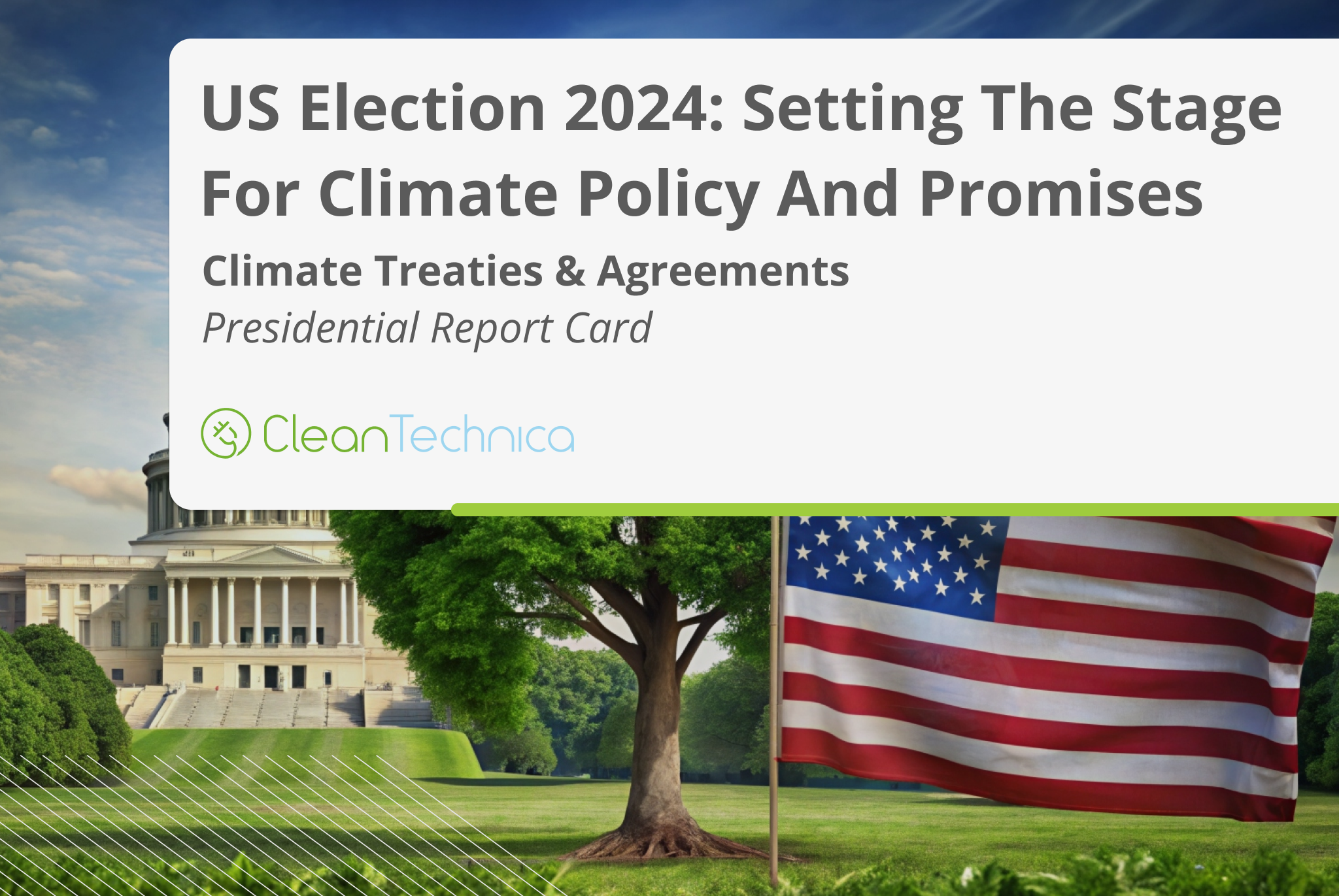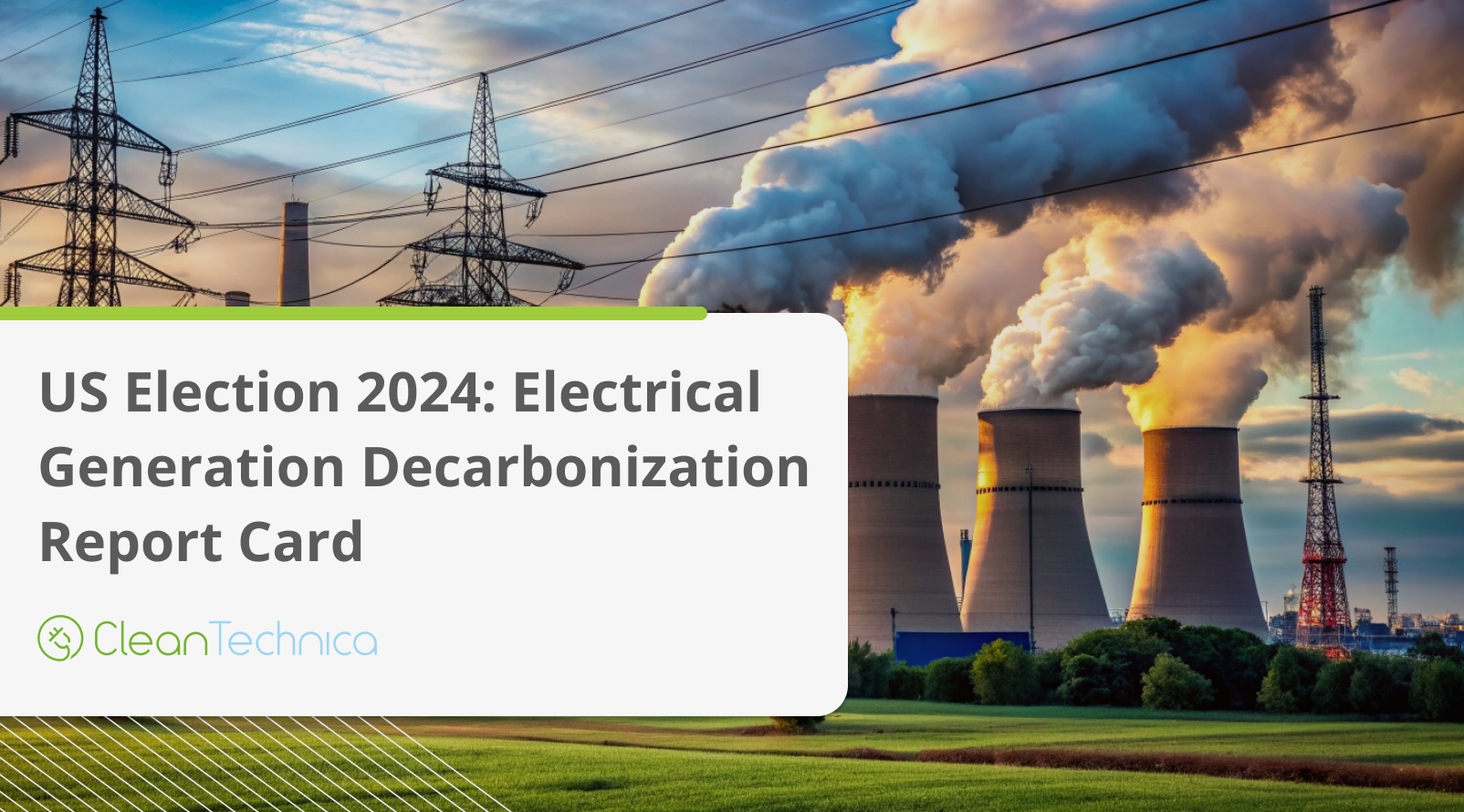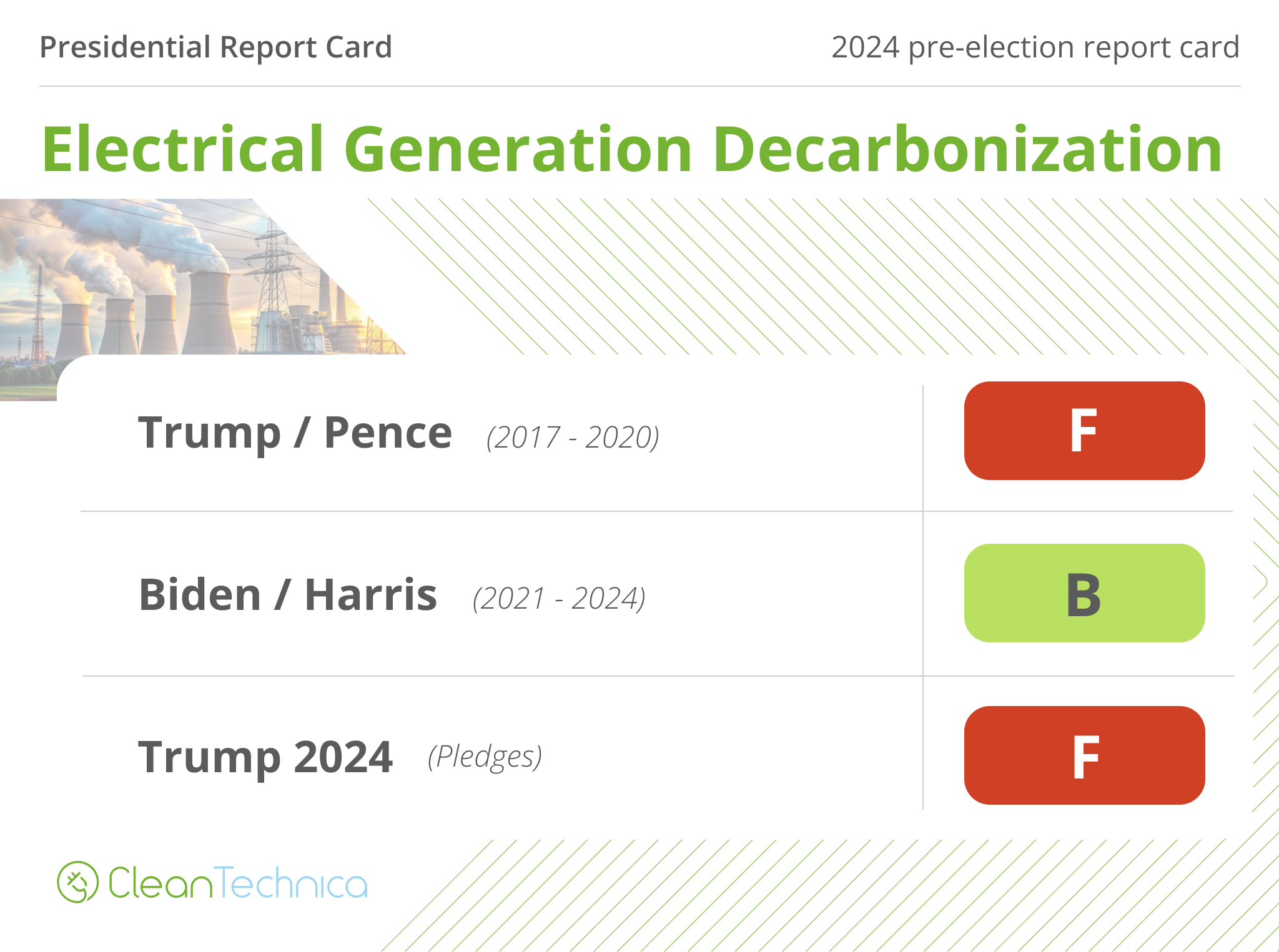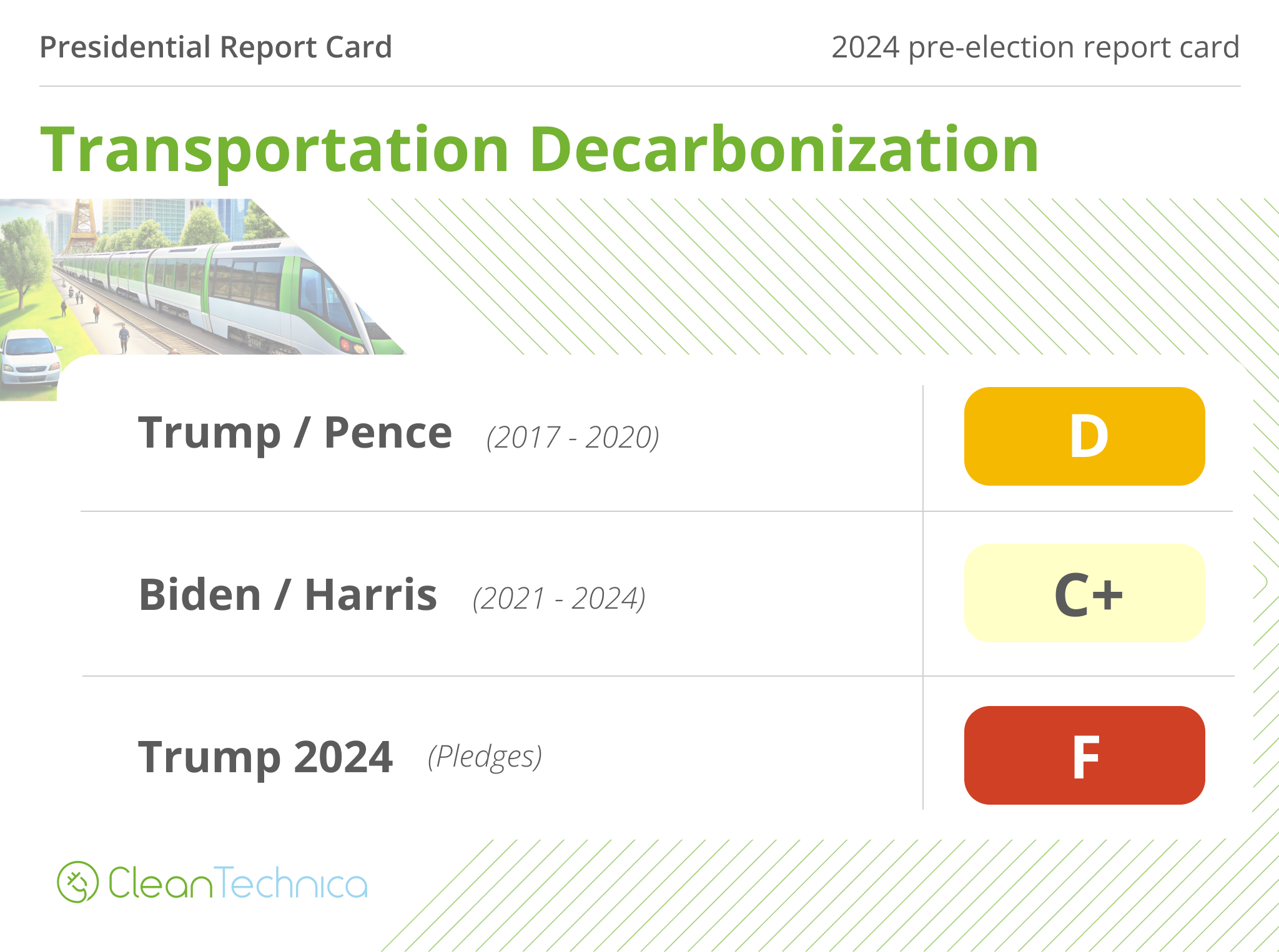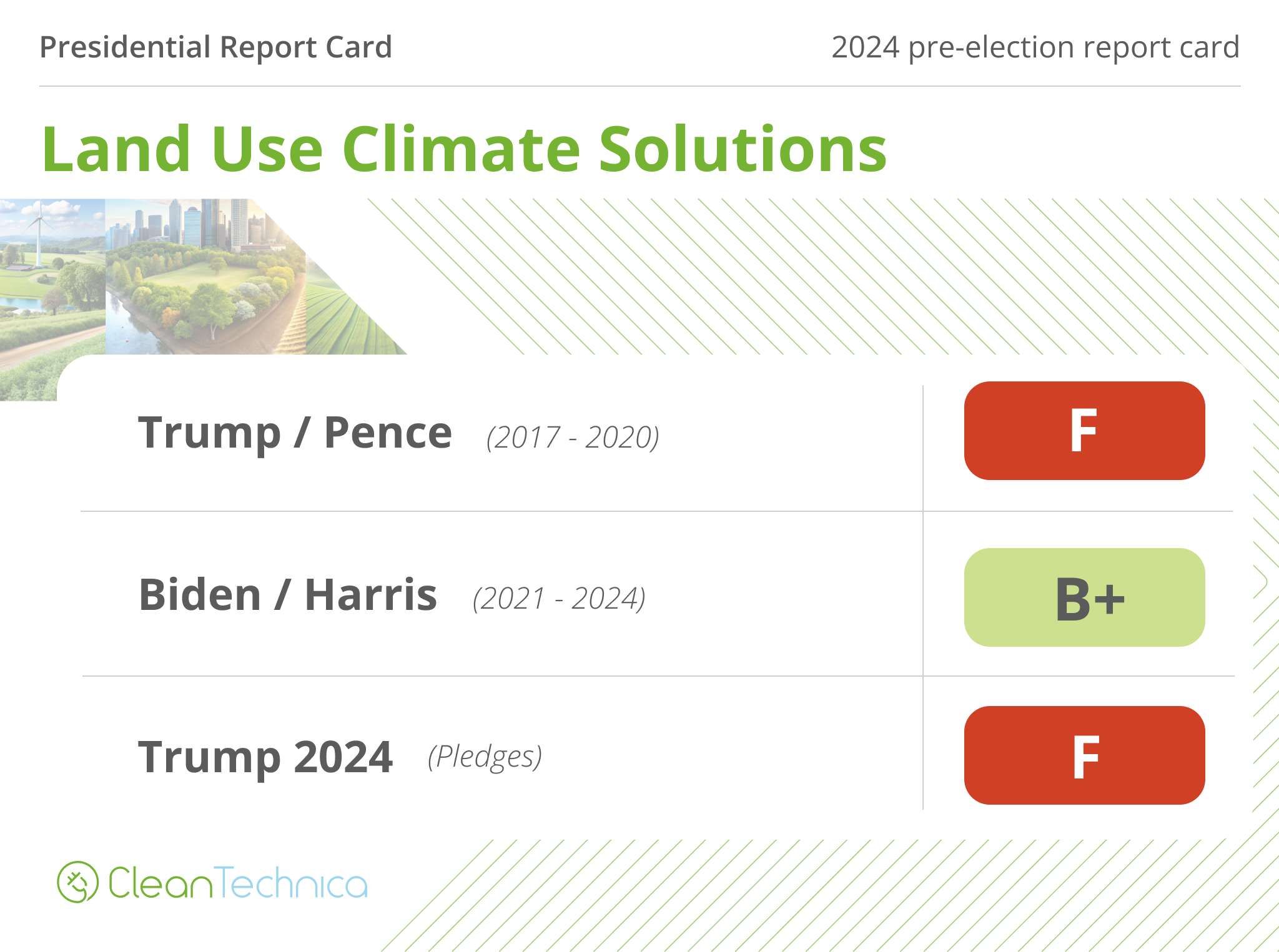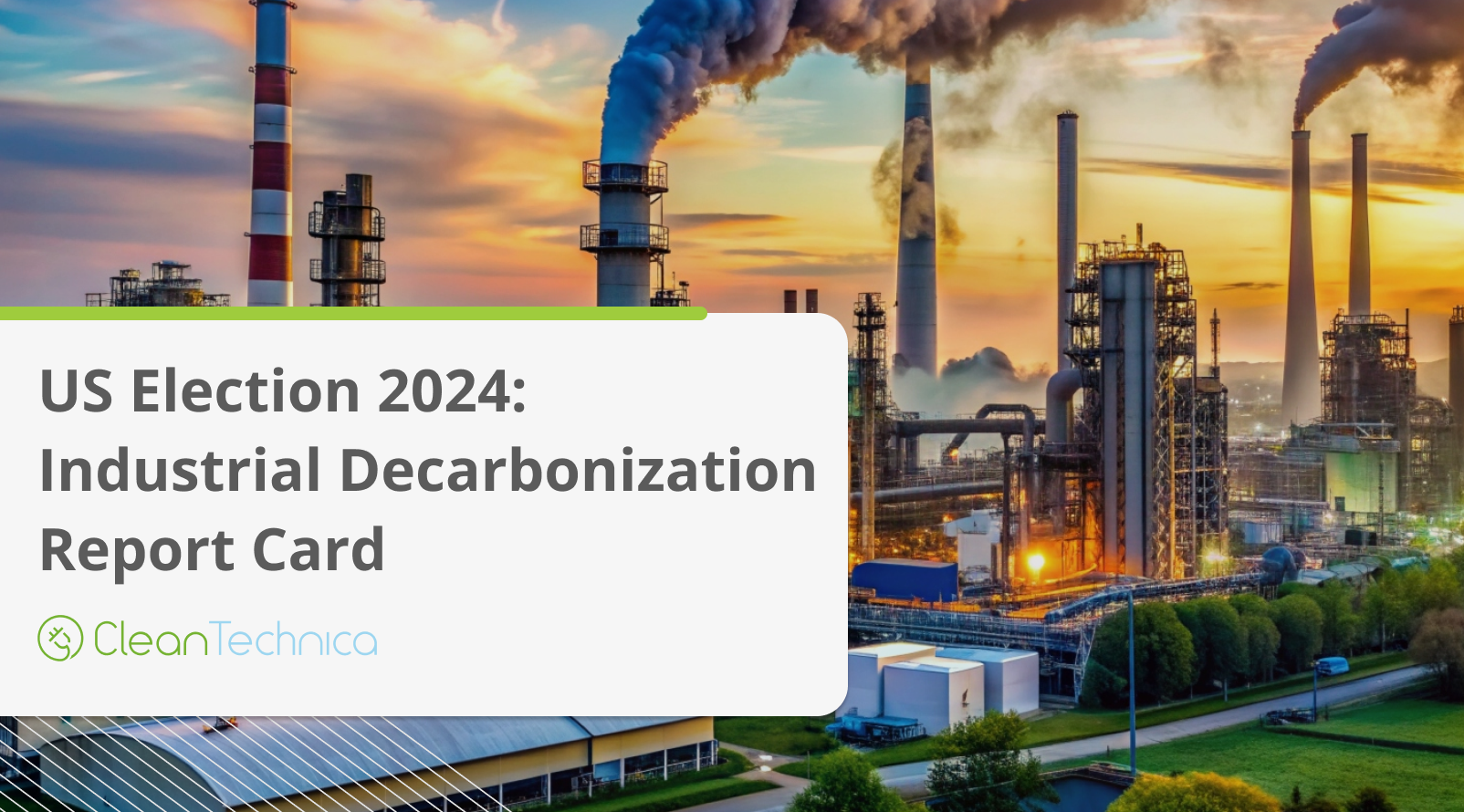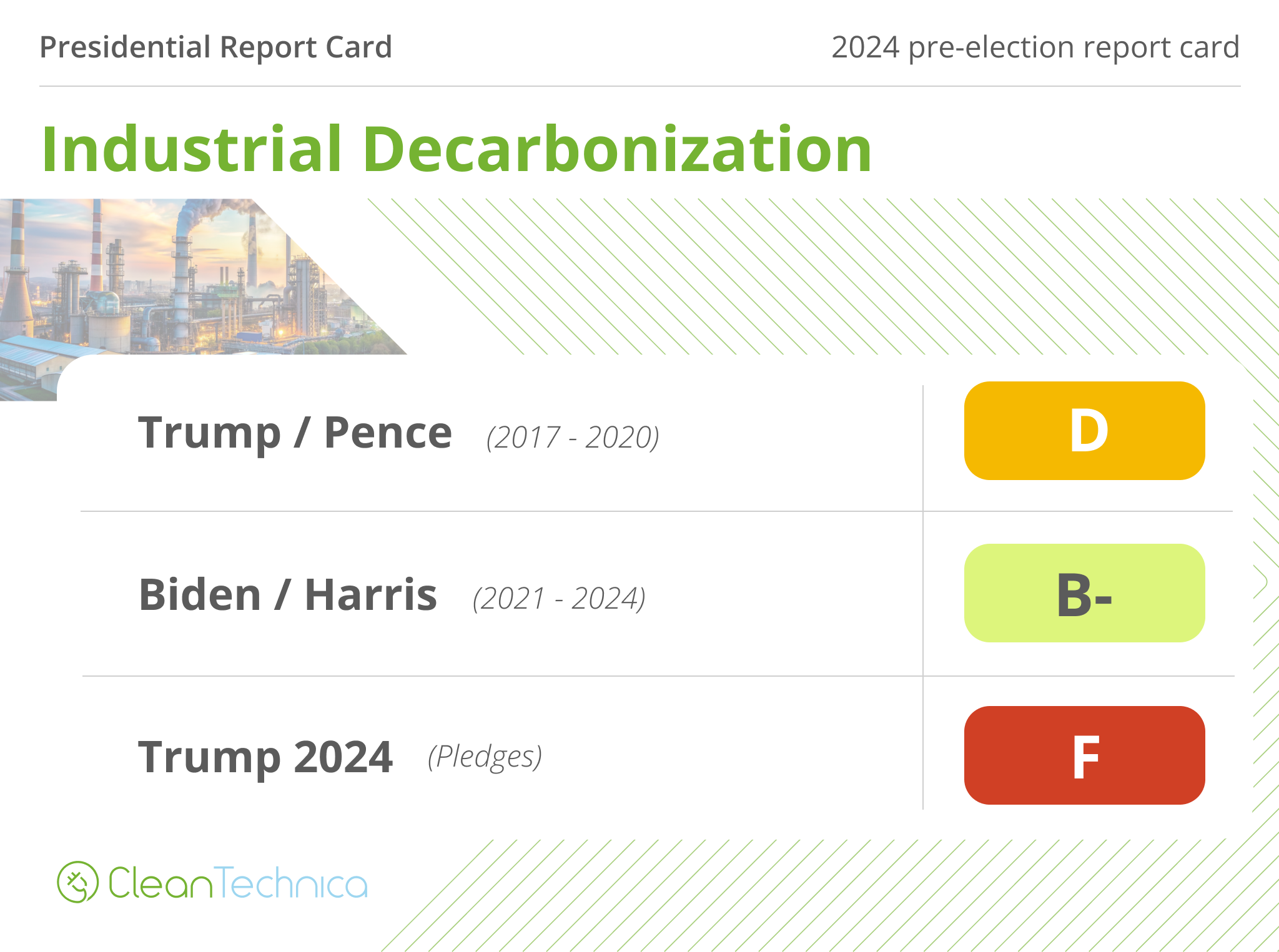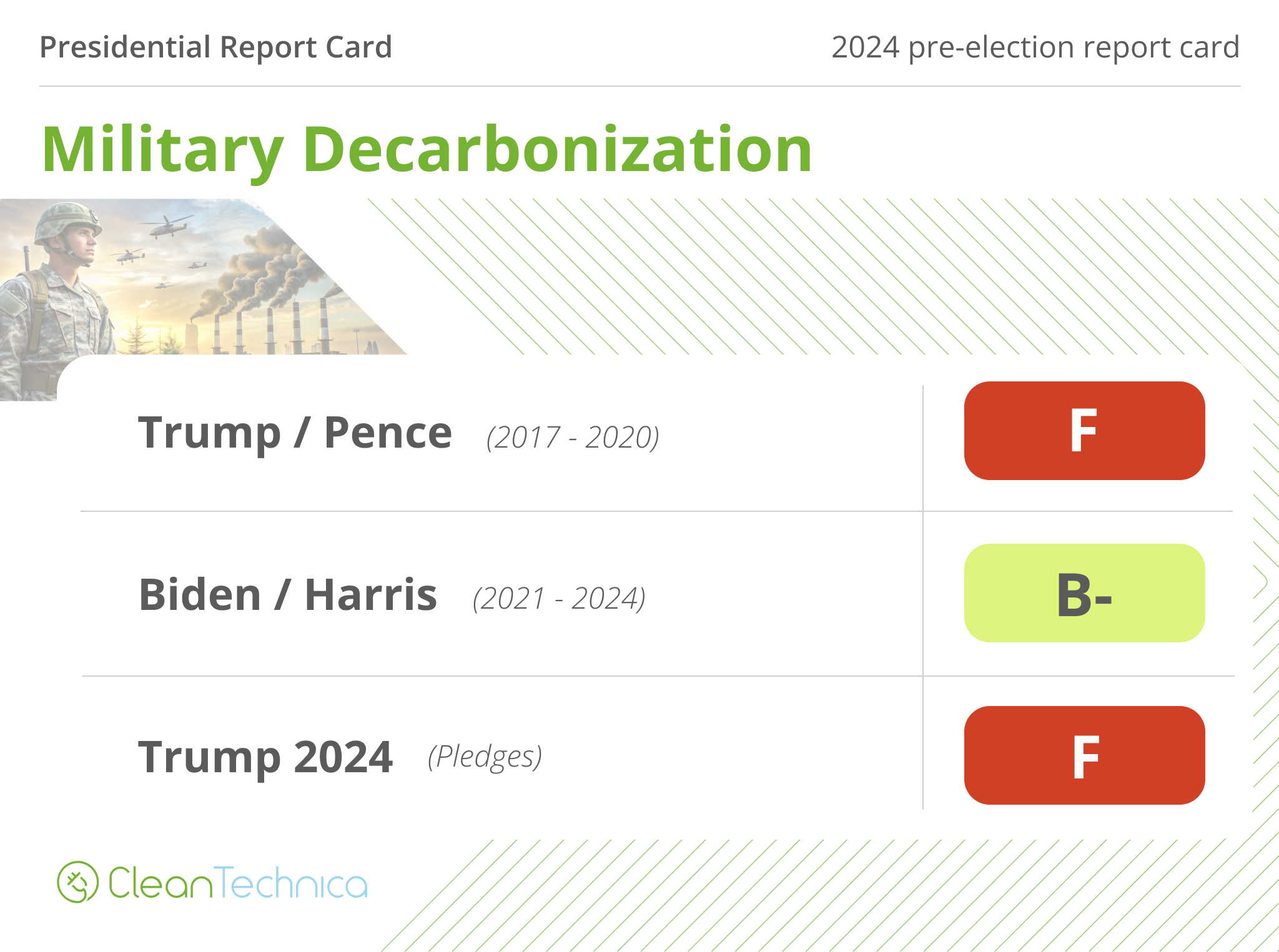Sign up for daily news updates from CleanTechnica on email. Or follow us on Google News!
The United States is approaching an election which will be pivotal for climate action, both domestically and globally. Over the past several days, CleanTechnica has been running a series on several major areas of policy, assessing the political actions back to George W. Bush’ Presidency. Now it’s time to draw up the report card for the candidates and their platforms as they currently exist.
The contrast is, of course, stark. While not perfect, the Biden–Harris administration have delivered enormous movement on climate action, while Trump’s first term and promises are a sea of red, a tsunami of climate action failure. To be clear, that was true of most files under Trump from any objective perspective, whether it was the economy, response to the global pandemic, international relations or human rights.
Treaties & Agreements
During the Obama administration, the US played a key role in the 2015 Paris Agreement and the Kigali Amendment, addressing climate change and refrigerants. However, the Trump administration withdrew from the Paris Accord and stalled the Kigali Amendment, leaving China to fill the leadership gap. They did pass the AIM Act for HFC trading.
Full assessment article on treaties and agreements is here.
The Biden–Harris administration rejoined the Paris Agreement and launched the Global Methane Pledge at COP26. They ratified the Kigali Amendment in 2022 and announced climate adaptation initiatives at COP27. Efforts to collaborate with China have faced challenges, especially with tariffs on Chinese EVs.
The US supports the IMO’s zero-emission shipping goals and the US–India Climate Partnership. Despite Biden’s climate finance goals, fossil fuel subsidies remain high, surpassing military spending. The administration succeeded in implementing a methane emissions price and strengthening HFC trading regulations.
Trump plans to withdraw from the Paris Accord again and eliminate the methane price, though he hasn’t committed to exiting the Kigali Amendment.
Electrical Generation
US electrical generation trends differ from the claims of both Biden and Trump. Despite Trump’s anti-renewable stance and regulatory rollbacks, wind and solar tax credits were extended, and their growth has been slow but steady. Total electrical generation has been flat since 2000, with fossil fuel demand rising.
Full assessment article on electrical generation decarbonization is here.
The Biden–Harris administration aims to boost renewables through the Infrastructure Investment and Jobs Act, targeting 30 GW of offshore wind by 2030 and a carbon-free power sector by 2035. However, tariffs on Chinese solar panels and potential tariffs on wind turbines could increase costs and slow progress.
US protectionism may lead to higher renewable energy costs compared to cheaper Chinese products, limiting US competitiveness in the global market. Natural gas and methane leakage remain significant issues. While Biden’s policies support renewables, Trump plans to cut these incentives, favoring coal and gas, which could further hinder renewable growth.
Transportation
Transportation is now the top source of US greenhouse gas emissions, making up 29% of the total. Light-duty vehicles account for 57% of these emissions, and medium- and heavy-duty trucks add 26%. The US lags in adopting electric vehicles compared to other regions.
Full assessment article on transportation decarbonization is here.
The Biden–Harris administration aims to address this but faces significant challenges due to post-World War II urban sprawl and a heavy reliance on cars. The US rail system, prioritizing freight over passengers, and a vast highway network further complicate efforts to shift to lower-carbon transportation modes.
The transportation blueprint promotes electric vehicles and alternative fuels, yet it does not effectively tackle the historical issues. Electric vehicles, driven by technological advancements, show promise, but affordability is a barrier due to economic inequality.
Efforts include expanding EV charging infrastructure with $7.5 billion allocated for 500,000 chargers by 2030. However, protectionist policies and limited incentives for electric freight trucks could slow progress.
Trump’s campaign plans to roll back many of these initiatives. While Biden’s efforts are underway, significant historical and structural challenges must be addressed to successfully decarbonize transportation.
Land Use
Land use policies are key to reducing greenhouse gas emissions and increasing community resilience. Compact urban planning cuts transportation emissions, while protecting forests and sustainable agriculture enhance carbon sequestration. Zoning regulations in high-risk areas and green infrastructure in cities reduce vulnerability to extreme weather.
Full assessment article on land use and climate is here.
The Biden–Harris administration aims to plant over a billion trees, restore ecosystems, and allocate over $3 billion for climate-smart agricultural practices. A moratorium on new oil and gas leasing aligns with their emission reduction goals, and nearly 29 gigawatts of clean energy projects have been approved. The American Climate Corps mobilizes young Americans for climate careers, and coastal resilience efforts focus on restoring natural defenses and managing retreat from high-risk areas.
Trump’s administration rolled back many land use policies, promoted oil exploration, and he plans to remove the leasing moratorium and push for more rural single-family zoning in 2024.
Industry
Four years ago, federal action on industrial climate issues seemed unlikely. The Biden-Harris platform focused on ratifying the Kigali Amendment and Paris Accord, with little likelihood of a carbon price.
Full assessment article on industrial decarbonization is here.
Efforts to introduce a carbon price were blocked, but a methane leakage price was introduced, starting at $900 per ton in 2024. The Biden–Harris administration also implemented strict regulations to cut methane emissions by 74% from 2005 levels by 2035.
The administration restored EPA funding, reversing Trump’s cuts, and appointed Michael S. Regan as EPA Administrator. The Inflation Reduction Act (IRA) includes tax credits for clean energy technologies and low-carbon materials, excluding fossil fuels.
The US leads in using electric arc furnaces (EAF) for steel production. The IRA incentivizes fully electrifying these furnaces and supports carbon capture and storage.
Despite Biden’s efforts, US fossil fuel exports have increased, with the US now exporting more oil and significantly more natural gas. While coal use in electricity generation has decreased, coal exports continue.
Trump’s administration weakened the EPA and rolled back environmental regulations but passed the AIM Act to reduce HFC refrigerants. His 2024 campaign promises further deregulation. Despite its flaws, the Biden–Harris administration’s climate policies are an improvement.
Military
The US military uses 80% of the federal government’s energy, making it one of the largest fossil fuel consumers globally. Obama’s climate achievements included withdrawing 230,000 troops from Iraq and Afghanistan and joining the Paris Agreement, which allowed voluntary military emission reporting.
Full assessment article on military decarbonization is here.
Trump withdrew from the Paris Agreement, but Biden rejoined, reinstating these provisions. In 2021, the Department of Defense reported 51 million metric tons of carbon dioxide equivalent emissions, mainly from jet fuel. This accounted for 76% of total federal emissions and 1% of US emissions. For context, these emissions are higher than a full three quarters of countries globally.
Biden aims for net-zero military emissions by 2050, with a 65% reduction by 2030. Plans include zero-emission vehicles by 2035 and carbon-free electricity. Federal procurement now requires contractors to disclose emissions and set reduction targets, promoting low-carbon materials.
The military’s vast purchasing power makes its shift to low-carbon options significant. Despite efforts to decarbonize, the military remains a significant climate challenge due to its size. Reducing its scale could lower emissions. Biden’s policies offer a more sustainable approach compared to Trump’s which favors both increased personnel and massive domestic deployment to the southern border.
Have a tip for CleanTechnica? Want to advertise? Want to suggest a guest for our CleanTech Talk podcast? Contact us here.
Latest CleanTechnica.TV Videos
CleanTechnica uses affiliate links. See our policy here.
CleanTechnica’s Comment Policy


